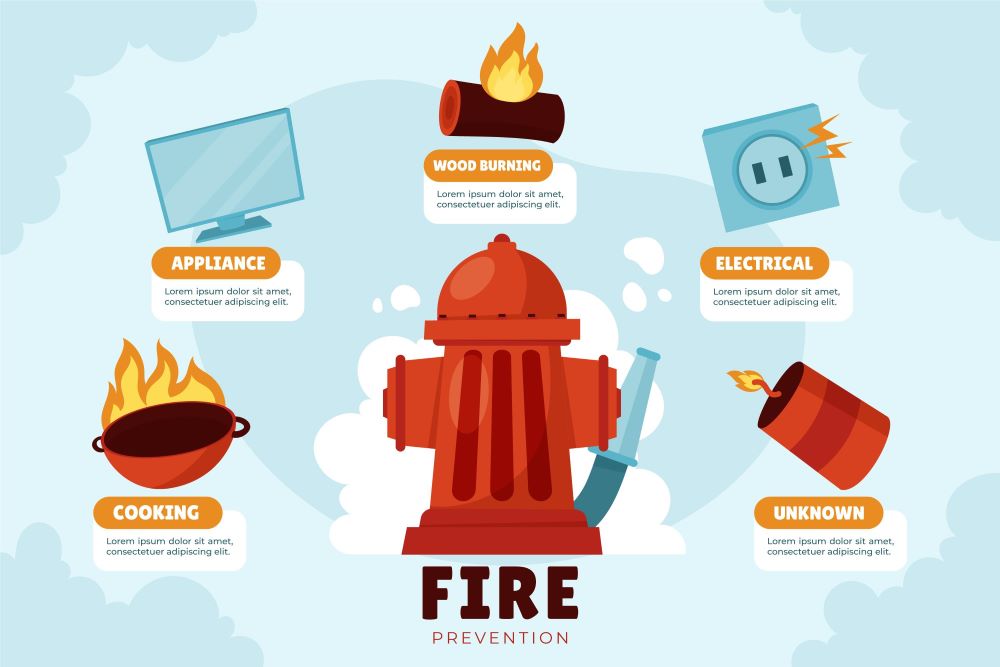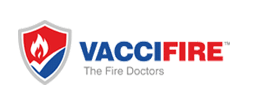Fire Safety Tips & Strategy for Multi-Storey Buildings

Multi-storey buildings are a common part of modern cities, offering both residential and commercial spaces. While these buildings provide convenience and better use of space, they also come with greater fire safety risks. A fire in a high-rise or multi-storey structure can spread quickly, cause panic, and make evacuation difficult. That is why having clear fire safety tips and a proper fire safety strategy is essential.
Why Fire Safety is Crucial in Multi-Storey Buildings
Fires in multi-storey buildings can be more dangerous than those in single-storey homes due to the following reasons:
- Difficult evacuation: It takes longer for residents to escape higher floors.
- Smoke spread: Smoke can travel fast through staircases, lifts, and ventilation shafts.
- Limited firefighting access: Firefighters may face challenges reaching upper floors.
- Large number of occupants: Multi-storey buildings often house many people, increasing the risk of injury.
Understanding these challenges highlights the need for strong fire safety measures and well-planned strategies.
Fire Safety Tips for Multi-Storey Buildings
1. Install Smoke Detectors and Alarms
Every floor and every unit of the building should have working smoke detectors. These devices give early warnings and allow occupants to evacuate before the fire spreads. Regular testing and battery checks are essential.
2. Keep Fire Extinguishers Accessible
Portable fire extinguishers should be available in hallways, staircases, and common areas. Residents and staff should know how to use them correctly. A quick response in the early stages can prevent small fires from turning into major incidents.
3. Maintain Fire Exits and Staircases
Emergency exits and staircases must be kept free from obstructions. They should never be used for storage. Clearly visible signs and emergency lighting must guide people toward safe exits.
4. Avoid Using Lifts During Fire
Lifts are unsafe during fires as they can get stuck or fill with smoke. Everyone in the building should be aware that staircases are the only safe evacuation route during a fire.
5. Regularly Check Electrical Systems
Many fires in buildings start due to faulty wiring, overloaded sockets, or short circuits. Regular inspections of electrical systems by qualified professionals can prevent such hazards.
6. Do Not Block Fire Fighting Equipment
Fire hydrants, sprinklers, hose reels, and alarm panels must always remain accessible. Blocking them can delay firefighting efforts and increase damage.
7. Educate Residents and Employees
Building occupants should receive basic fire safety training. Simple knowledge such as how to use a fire extinguisher, how to exit safely, and whom to call in case of emergency can save lives.
Fire Safety Strategy for Multi-Storey Buildings
Having a strategy is just as important as following safety tips. A fire safety strategy ensures that preventive measures, emergency responses, and rescue operations are well planned.
1. Fire Risk Assessment
The first step in any fire safety strategy is identifying potential fire risks. Building management should conduct a thorough fire risk assessment that includes:
- Sources of ignition (electrical equipment, gas systems, smoking areas).
- Storage of flammable materials.
- Escape routes and their accessibility.
- Safety equipment conditions.
Based on the findings, corrective actions should be taken immediately.
2. Fire Safety Plan
A detailed fire safety plan should be in place for every multi-storey building. This plan must include:
- Fire evacuation routes and assembly points.
- Roles and responsibilities of building staff during emergencies.
- Contact numbers of fire safety officers and local fire department.
- Procedures for assisting elderly, disabled, or children during evacuation.
Copies of the plan should be displayed in common areas and shared with all occupants.
3. Fire Drills and Training
Conducting regular fire drills helps residents and employees practice evacuation. These drills reduce panic during real emergencies and ensure everyone knows their role. Training sessions should also cover:
- Use of fire extinguishers.
- How to stay low to avoid smoke inhalation.
- The importance of not re-entering the building until declared safe.
4. Fire Suppression Systems
Installing automatic fire suppression systems, such as sprinklers, is a critical part of fire safety. Sprinklers can control or extinguish fires before they spread widely. Buildings should also have fire alarms connected to monitoring systems for quick alerts.
5. Emergency Lighting and Signage
During a fire, power supply may fail. Emergency lighting helps guide occupants toward exits even in darkness. Clear signage showing escape routes, fire exits, and emergency instructions is vital.
6. Coordination with Fire Department
Building management should maintain a direct connection with the local fire department. Firefighters should be familiar with the building layout, water supply systems, and high-risk areas. This coordination ensures faster response times during emergencies.
7. Maintenance of Safety Systems
A fire safety strategy is incomplete without regular maintenance. Smoke detectors, alarms, sprinklers, and extinguishers must be inspected and serviced on time. Neglecting maintenance can render safety systems ineffective during an emergency.
Key Fire Prevention Practices
Prevention is always better than cure. Along with strategies, every occupant should follow fire prevention practices, such as:
- Do not overload electrical outlets.
- Store flammable materials safely and away from heat sources.
- Avoid smoking inside the building.
- Keep corridors and staircases clear.
- Report any faulty wiring or equipment immediately.
By practicing prevention, the chances of fire outbreaks can be reduced significantly.
Role of Building Management and Residents
Both building management and residents have roles to play in fire safety:
- Building Management Responsibilities:
- Install and maintain fire safety equipment.
- Provide training and conduct fire drills.
- Ensure compliance with fire safety regulations.
- Coordinate with fire departments and emergency services.
- Install and maintain fire safety equipment.
- Residents’ Responsibilities:
- Follow safety rules and evacuation plans.
- Avoid unsafe practices such as blocking exits or tampering with fire equipment.
- Participate in fire drills and training.
- Stay calm and assist vulnerable people during emergencies.
- Follow safety rules and evacuation plans.
When both parties work together, the overall safety of the building improves.
Common Mistakes to Avoid in Multi-Storey Buildings
Even with safety systems in place, mistakes can lead to major disasters. Some common errors to avoid are:
- Ignoring fire alarms, assuming it is a drill.
- Blocking staircases with furniture or boxes.
- Storing flammable items in basements or hallways.
- Using lifts during evacuation.
- Delaying evacuation to collect personal belongings.
Avoiding these mistakes can save precious minutes during emergencies.
Conclusion
Fire safety in multi-storey buildings requires a mix of preventive measures, practical tips, and a well-planned fire safety strategy. Installing alarms, maintaining exits, conducting fire drills, and training residents can make a big difference in reducing risks.
A building is only as safe as the people living and working inside it. By staying alert, prepared, and committed to fire safety, both building management and occupants can protect lives and property from fire hazards.
When it comes to fire, every second counts. Following the right fire safety tips and strategies ensures that multi-storey buildings remain secure, even in the face of emergencies.
